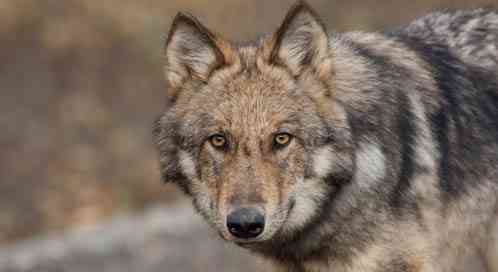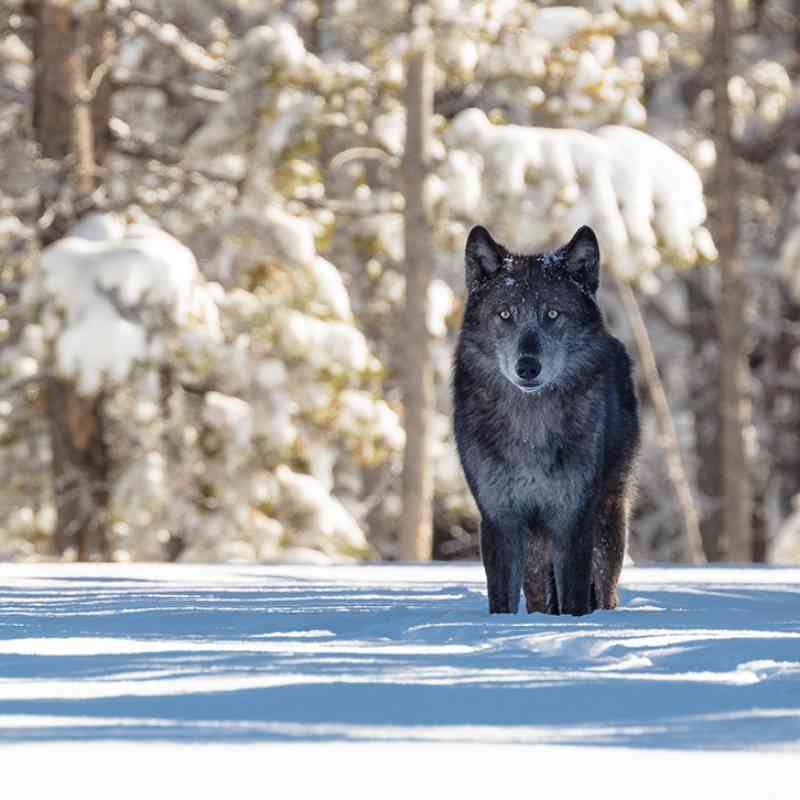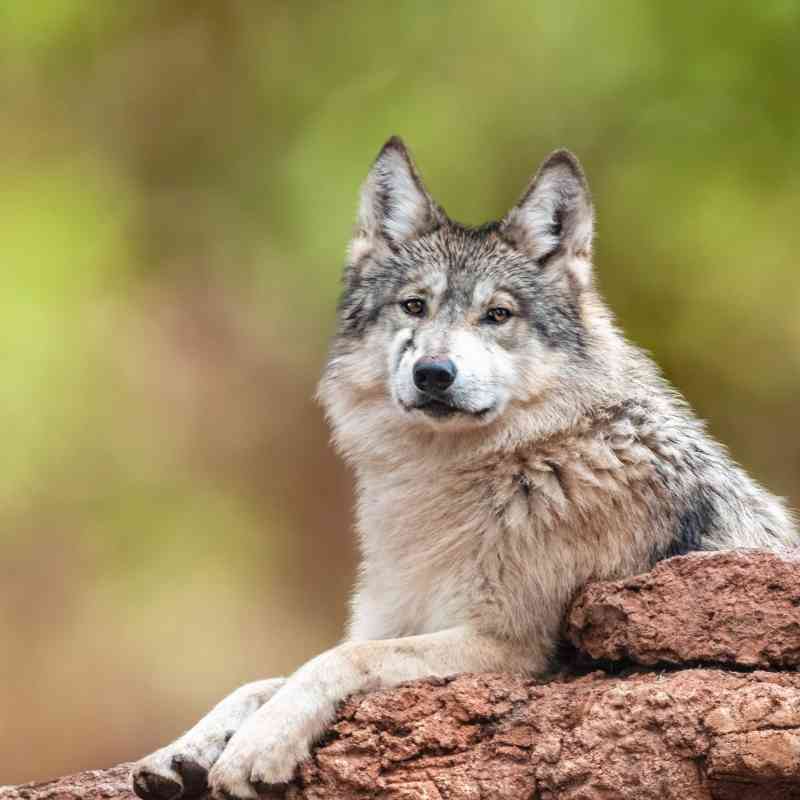As Idaho ramps up its killing of wolves, is there a valuable lesson to be learned from the Nez Perce?
By Todd Wilkinson
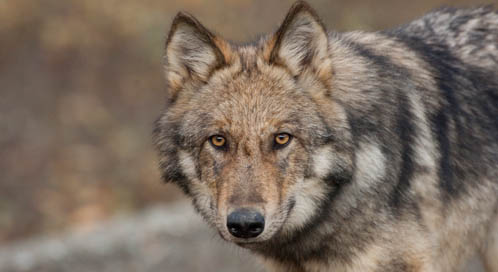 Nearly a quarter century ago, L. David Mech made a pair of bold predictions about the challenges still awaiting wolves in the American West. As he and I stood on a bluff in Yellowstone National Park discussing what was then the highly unlikely prospect that the howls of Canis lupus would ever be common again in the Northern Rockies, my home region, the world’s foremost wolf biologist demonstrated foresight that now seems profoundly prophetic.
Nearly a quarter century ago, L. David Mech made a pair of bold predictions about the challenges still awaiting wolves in the American West. As he and I stood on a bluff in Yellowstone National Park discussing what was then the highly unlikely prospect that the howls of Canis lupus would ever be common again in the Northern Rockies, my home region, the world’s foremost wolf biologist demonstrated foresight that now seems profoundly prophetic.
“Bringing back wolves will be difficult,” he said. “And if it happens, it would be momentous. But then the real test begins. Has society moved past its historical prejudices attached to these animals or is the hysteria destined to be repeated again? To me, that will be the true gauge of whether Americans have become smarter about our relationship with wolves.”
Then he added something else: Maybe the only group of citizens who fully understand the native importance of wolves on the landscape is native people.
Today, as I reflect on Mech’s words and on the 20 years that have passed since wolves were successfully reintroduced both to Yellowstone and wilderness areas of Idaho, it is remarkable how prescient his musings were. In the coming years, Idaho is planning to eliminate more than three-fourths of the entire wolf population in the state, essentially undermining one of the greatest wildlife recovery stories in modern times.
Armed with $400,000 from the state’s general fund and aided by contributions from hunters and the livestock industry, a newly created “wolf depredation control board” is to reduce Idaho’s free-roaming wolf population from the estimated 659 counted at the end of 2013 to just 150—the bare minimum required by the U.S. Fish and Wildlife Service (FWS) to keep wolves from again coming under federal endangered species protection.
The effort is led by Idaho Gov. Clement LeRoy “Butch” Otter, whose extreme anti-wolf sentiments are legendary. Not only did Otter in 2007 publicly declare that he wanted no more than 100 wolves in the state, but he announced, as an act of political theater, that he would be the first in line to buy a wolf-hunting license.
“Never before in the history of this country has a state so forcefully acted to deliberately reverse—and essentially undo—a major milestone in American wildlife conservation,” says Jamie Rappaport Clark, president of Defenders of Wildlife.
Throughout the Northern Rockies, millions of dollars already have been spent killing wolves. In fact, more wolves have been lethally removed than exist today—1,600 across the five-state area—and in most instances the cost of destroying wolves has far exceeded the value of the livestock or big-game hunting opportunities lost to wolves. Idaho represents ground zero for the social test spelled out by Mech.
The state attracted national scorn late last year when it sent a private trapper into the federal Frank Church-River of No Return Wilderness to target wolf packs for elimination without a sound biological rationale or any threat to livestock. In fact, no cattle or sheep were even present—just big-game outfitters who wanted bigger elk populations for their clients. At least nine wolves were killed, and the effort was halted only after Defenders and several conservation partners mounted a legal challenge in federal court.
“We are sorry it took an emer-gency injunction request to the court of appeals to get Idaho to halt this illegal program, and we hope that the federal government in the future will take more seriously its public trust responsibility to protect the wilderness from state efforts to exterminate native wildlife,” said Tim Preso, an attorney with EarthJustice.
Not far away in the eponymous river town of Salmon, townsfolk staged a controversial “hunting derby” promising participants prizes for killing wolves and felling as many coyotes as possible. No wolves were killed, but organizers vowed to hold the competition again. Even local law enforcement in Idaho has appeared to support, at least rhetorically, the wolf poaching by vigilantes vowing to kill wolves, an approach known as “shoot, shovel and shut-up.”
Elsewhere this year, sharpshooters with the U.S. Department of Agriculture’s notorious Wildlife Services chased and gunned down 23 wolves from a helicopter, ostensibly to help bolster elk numbers—even though scientific evidence shows that changes in habitat, years of drought and predation by wolves and other predators, particularly mountain lions and bears, also play a significant role in shaping elk numbers.
“Wolves are under siege in Idaho but the reality hasn’t really gotten the attention that it deserves from wildlife-loving Americans,” says Suzanne Asha Stone, Defenders’ northwestern senior representative who has devoted decades of her life to wolf recovery.
Few conservationists have the perspective Stone does. She was there during the winters of 1995 and 1996 helping reintroduce 35 wolves to wilderness areas in central Idaho and to Yellowstone National Park. “While public attention has been focused on Yellowstone wolves because they’re literally visible to millions of people who come to watch them, here in Idaho the saga has been largely out of sight and mind to most people,” she says. “It’s ironic and troubling that we’re basically witnessing an orchestrated push to re-purge wolves for no other reason than a cultural hatred toward the animals that has persisted since statehood.”
Stone reminded me that the state action is not universally heralded and she shares the perspective that Mech expressed to me nearly 25 years ago. In particular, she points to one group that played a pivotal role in giving wolves a second chance in the West and has quietly been an unsung conservation hero—the Nez Perce Tribe.
For a better understanding, I travel to the tiny community of Lapwai on the Nez Perce Reservation in Idaho. It’s a town surrounded by rugged mountain forest and breathtaking open space known as “the Palouse.” Here, I meet with Josiah Blackeagle Pinkham, the Nez Perce’s cultural resources ethnographer. When he speaks about wolves (animals known as He’me), he makes no allusions to European fairy tales, no references drawn from Little Red Riding Hood or the Brothers Grimm. “We have our own stories about wolves, coyotes and other animals that speak to our attitudes of coexistence,” he explains. “They go back to a time long, long before Europeans ever realized this continent was a place on the map of the world.”
After a pause, Pinkham notes that in the Nez Perce lexicon—evolved over thousands of human generations—there is no natural word for “eradication,” meaning the deliberate annihilation of a species as was carried out by European settlers against bison and wolves and other predators. “That concept is foreign to us,” he says.
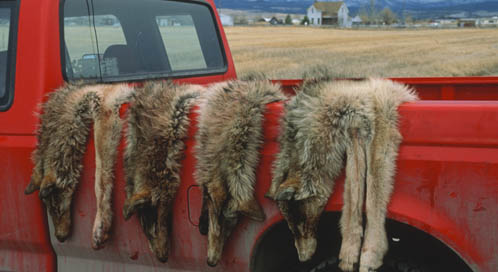 A college-educated father of young children, son of an author who once served as tribal chairman, grandson of a noted shaman, and a hunter, fisherman and naturalist, Pinkham is keenly aware of two divergent world views that surround him as he points toward a spot on the horizon where tribal members recently spotted wolves.
A college-educated father of young children, son of an author who once served as tribal chairman, grandson of a noted shaman, and a hunter, fisherman and naturalist, Pinkham is keenly aware of two divergent world views that surround him as he points toward a spot on the horizon where tribal members recently spotted wolves.
Recognized as one of the country’s most progressive tribes for its approaches to land stewardship and wildlife conservation, the Nez Perce live on a reservation that is an island within a wolf-hating state. “Indian people can relate to wolves,” Pinkham notes. “Both have persisted—we’ve been survivors—in spite of attempts to make us go away.”
When former Interior Secretary Bruce Babbitt gave the green light for wolf reintroduction to proceed in the West in 1994, Idaho refused to participate in an attempt to stymie wolf recovery. Much to the state’s surprise, the Nez Perce stepped forward. The tribe has primary jurisdiction over 760,000 acres of reservation in Idaho and, due to treaty rights dating back to 1855, has guaranteed access to more than 17 million acres of original tribal homeland covering a variety of federal public lands in Idaho, Montana, Oregon and Washington—including wilderness areas where the FWS intended to release wolves transplanted from Canada.
Defenders’ Stone credits a cast of notable Nez Perce wolf advocates—including the late tribal chairman Charles H. “Pete” Hayes and elder Horace Axtell, a traditionalist and authority on oral history and customs—with supporting reintroduction even as the state was severely critical of tribal involvement.
Pinkham says that elders had long foretold the return of wolves following their elimination earlier in the 20th century. Reports came from Nez Perce elk and deer hunters, berry pickers and medicinal plant harvesters that lone wolves, possibly dispersers from packs in Canada, were passing through. Occasionally, tribal members would howl into the twilight of the Palouse and forests with their calls answered.
But they knew that wolves needed a boost, and the Nez Perce waited for the right opportunity. In 1994 that moment arrived. “I visited the tribal council when the wolf reintroduction proposal was moving toward reality and asked for their advice and support,” Stone says. “When the state of Idaho refused to support the restoration efforts, wolves needed involvement from the Nez Perce to monitor their survival and their response was, ‘count us in.’”
The Nez Perce committed as full participants in wolf reintroduction. While federal officials were in Canada finding wolves suitable for release, Axtell performed a special ceremony to welcome wolves back and re-establish the severed connection between the people and their ancestral ally. They said special prayers for the wolves while they were still in their transport cages and rang bells to emphasize the power of their words.
Quickly, the tribe emerged as a scientific authority on the growth of the wolf population as more packs were established and behavior was tracked over thousands of square miles. Curt Mack, hired to be the tribe’s wolf recovery coordinator, describes those first several years during a chat in McCall. “There are some tribal members who hunt or raise cattle and they were concerned about wolf impacts, but overall the level of hysteria that you see in other parts of the state was not present here,” he says.
Nez Perce wolf biologists were credited with providing the scientific information that enabled the larger public to chart the dramatic movement of Idaho’s most famous and nationally beloved wolf known as “B2” (bestowed with the name Chat Chaat, which means “Older Brother,” by the tribal students who decorated his collar and tracked his movements). During his 14-year life, which began in Canada, Chat Chaat represented the first generation in Idaho’s new wolf era and taught his pack members how to survive. He also appeared to be in mourning after losing his mate, who was killed in a lethal encounter with an elk. Everyone on the Nez Perce Reservation, including school kids, knew who Chat Chaat was.
“Wolves are not foreign to the tribes—they’re natural extensions of them,” says Stone. “Tribal people understand that you don’t need to put a price tag on the head of an animal for it to have worth. They’re not talking about economics. They’re talking about the existence value of a species and the role it plays in making natural communities complete.”
To tap into this positive mind-set, Defenders is also involved in dialogs with other tribes across the Pacific Northwest, including the Confederated Tribes of the Umatilla and Colville, which includes the Cayuse and Walla Walla, the Quileute on the Olympic Peninsula and others deemed important not that wolves are expanding their range in Oregon and Washington.
“When you talk about government agencies, whether it’s FWS, the U.S. Forest Service or the state of Idaho, compartmentalization is a big problem,” Pinkham says. “Sometimes they can only respond to where the most political pressure is coming from and that skews what you do. It might be the forest products industry, ranchers or hunters, and so they’re forced to put out little fires to make the groups happy. The Nez Perce approach involves asking the question: ‘How am I going to restore this greater whole so that it can function on its own without my intervention. As ‘land managers,’ we’re one of the few entities trying to manage ourselves out of existence, not in terms of our presence but in terms of the need to constantly tinker.”
As the anti-wolf rhetoric in Idaho continues, Stone says indigenous attitudes and actions provide a powerful contrast. The Nez Perce brought Coho salmon back to the Clearwater River, for example. They’ve also been advocates for establishing wild, free-ranging bison herds, and they support recovery of imperiled wolverine and lynx. “They don’t see doing these things as a burden that might be imposed upon them,” Mack says. “They consider it a sacred obligation to lend members of the animal world a helping hand because, according to their own creation stories, it was the animal world that preceded people and helped them survive.”
Carter Niemeyer, a retired federal biologist who oversaw federal efforts to control wolves that came into conflict with ranchers, investigated reports of depredation and concluded many livestock deaths were blamed on wolves without evidence. He says the Nez Perce’s patient, calm, long-term perspective—one that rejects rash, knee-jerk decision-making—is exactly what’s needed in the social discussion swirling around wolves in Idaho.
“Here you have a people that not only have the longest track record of coexisting with wolves, but they are the ones publicly saying that any management should be based on sound science, and they’re reminding us of the profound spiritual value that wildlife has in our lives,” he says. “All of this seems to be falling upon the deaf ears of people who are calling the shots in Idaho. It’s unfortunate because it offers a better way for humans to think about their place in the natural world.”
For me, I turn again to the counsel of L. David Mech. In his landmark 1970 book “The Wolf,” the scientist alluded to the dangers of anti-wolf attitudes blinded by deeply embedded hate. “These people cannot be changed,” he wrote. “If the wolf is to survive, the wolf-haters must be outnumbered. They must be outshouted, out-financed and out- voted. Their narrow and biased attitude must be outweighed by an attitude based on an understanding of natural process. Finally, their hate must be outdone by a love for the whole of nature, for the unspoiled wilderness, and for the wolf as a beautiful, interesting, and integral part of both.”
It’s a perspective that Josiah Blackeagle Pinkham and the Nez Perce embrace with open arms.
Todd Wilkinson lives in Bozeman, Montana. He is the author of “Last Stand: Ted Turner’s Quest to Save a Troubled Planet,” about Turner’s role in re-wilding the West and harboring one of the largest wolf packs in the Lower 48 on one of his ranches.
Related

